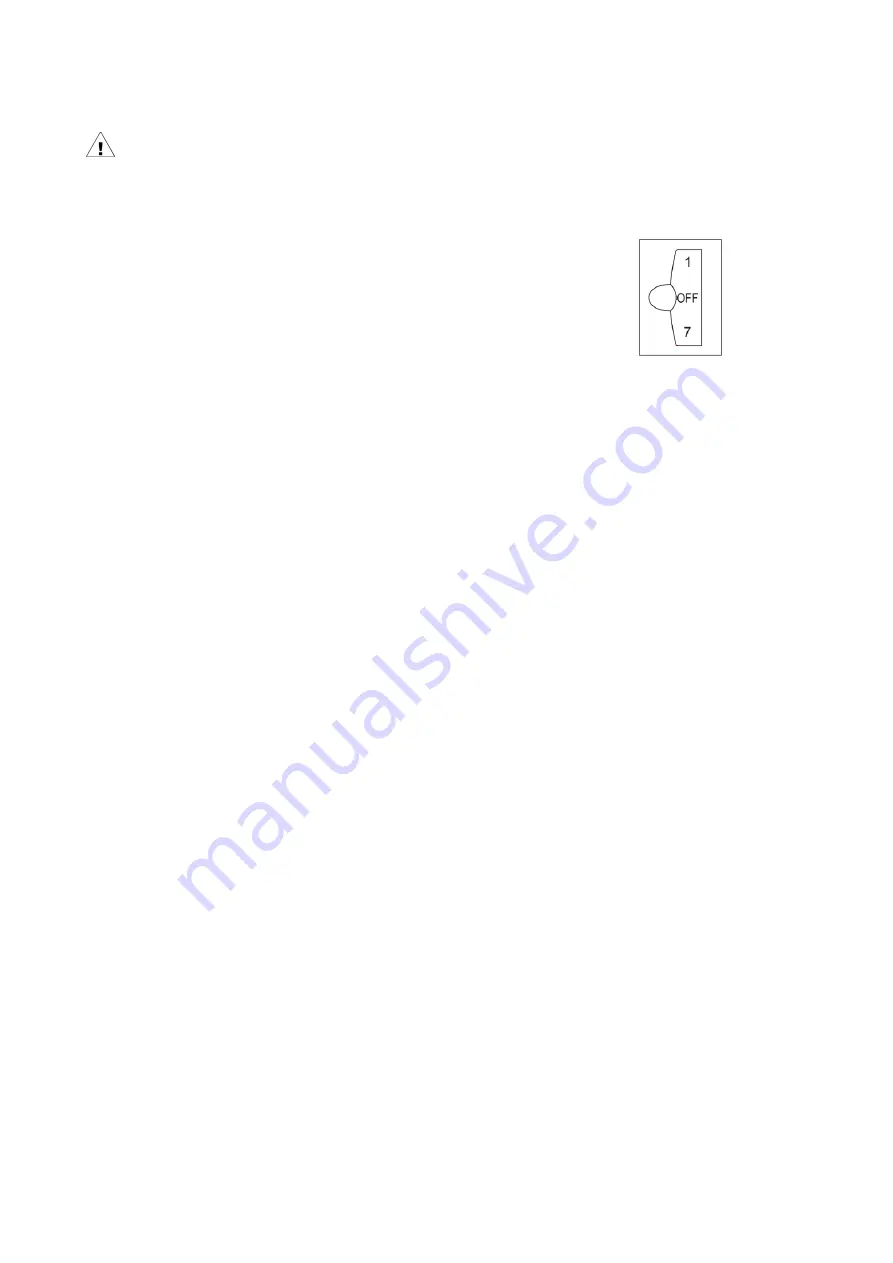
according to the user’s temperature setting. After the refrigerator is fully cooled, put in foods, which usually need 2~3
hours to be fully cooled. In summer, when the temperature is high, it takes more than 4 hours for the foods to be fully
cooled (Try to open the refrigerator door as less as possible before the internal temperature cools down).
If the refrigerator is installed in the moisture place, make sure to check whether the ground wire and leakage circuit
breaker are normal. If vibration noises are produced due to the refrigerator contacting the wall or if the wall gets blackened
by air convection around the compressor, move the refrigerator away from the wall. Setting up the refrigerator may cause
jamming noise or image chaos to the mobile phone, fixed-line telephone, radio receiver, television surrounding it, so try to
keep the refrigerator as far away as possible in such case.
III.
Functions
Temperature selection
The temperature of the appliance can be adjusted by turning the thermostat dial.
•
The thermostat can be set between 1 and 7.
•
1 is the warmest setting.
•
7 is the coldest setting.
•
The recommended setting is 4.
•
Set the dial to OFF to turn off the cooling function.
Internal temperature of the appliance can vary based on ambient temperature, the quantity of items stored and how
frequently the door is opened.
The thermostat setting of '6' or '7' is suitable when ambient temperature is under 16 °C, but it may lead to ice formation if
the refrigerator keeps running at such setting for a long time under the normal ambient temperature, which belongs to
normal phenomenon. In such case, it is recommended to adjust back the thermostat setting appropriately.
IV.
Instructions for food storage
Precautions for use
l
The appliance might not operate consistently (there is possibility of defrosting or temperature becoming too warm in
the frozen food compartment) when sited for an extended period of time below the cold limit of the temperature
range for which the refrigerating appliance is designed
l
The information of climate type of the appliance is provided on the rating plate.
l
The internal temperature could be affected by such factors as the location of refrigerating appliance, ambient
temperature, and frequency of door open, etc., and if appropriate, a warning that setting of any temperature control
device might have to be varied to allow for these factors should be made.
l
Effervescent drinks should not be stored in the freezer compartment or the low-temperature compartment, and some
products such as water ices should not be consumed too cold.
Food storage location
Due to the cold air circulation in the refrigerator, the temperature of each area in the refrigerator is different, so different
kinds of food should be placed in different areas.
The fresh food compartment is suitable for the storage of such foods as need not to be frozen, the cooked food, beer,
eggs, some condiments that need cold preservation, milk, fruit juice, etc. The crisper box is suitable for the preservation of
vegetables, fruits, etc.
The freezer compartment is suitable for the storage of ice cream, frozen food and the foods to be preserved for a long
time.
Use of the fresh food compartment
Set the temperature of the fresh food storage compartment between 2
℃
~ 8
℃
, and store the foods that are intended
for short-term storage, or to be eaten at any time in the fresh food compartment.
Fridge shelf: When removing the shelf, lift it up first, and then pull it out; and when installing the shelf, place it into position
before putting it down. (For the two-section shelf, push the first section to the rear end, and then pull the second section
out). Keep the shelf rear flange upward, to prevent foods from contact the liner wall. When taking out or putting in the shelf,
hold it firmly, and handle with care to avoid damage.
Crisper box: Pull out the crisper box for access to food. After using or cleaning the cover plate of the crisper box, be sure
to put it back onto the crisper, so that the internal temperature of the crisper box will not be affected.
Tips for shopping the frozen foods
1. When you are buying frozen food, look at the Storage Guidelines on the packaging. You will be able to store each item
of frozen food for the period shown against the star rating. This is usually the period stated as “Best to use them before×”,
found on the front of the packaging.
2. Check the temperature of the frozen food cabinet in the shop where you buy the frozen foods.
3. Make sure the frozen food package is in perfect condition.
4. Always buy frozen products last on your shopping trip or visit to the supermarket.
5. Try to keep frozen food together whilst shopping and on the journey home, as this will help to keep the food cooler.
6. Don’t buy frozen food unless you can freeze it straight away. Special insulated bags can be bought from most
supermarkets and hardware shops. These keep the frozen foods cold longer.
7. For some foods, thawing before cooking is unnecessary. Vegetables and pasta can be added directly to boiling water or
steam cooked. Frozen sauces and soups can be put into a saucepan and heated gently until thawed.
8. Use quality food and handle it as little as possible. When foods are frozen in small quantities, it will take less than for
them to freeze up and thaw.
9. Estimate the amount of foods to be frozen up. When freezing large amounts of fresh food, adjust the temperature
control knob to the low mode, with the freezer temperature lowered. So, foods can be frozen up in fast manner, with the
food freshness well kept.






























